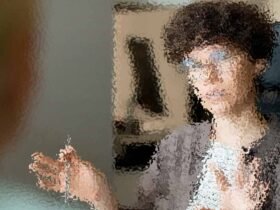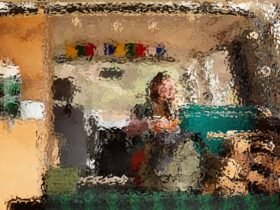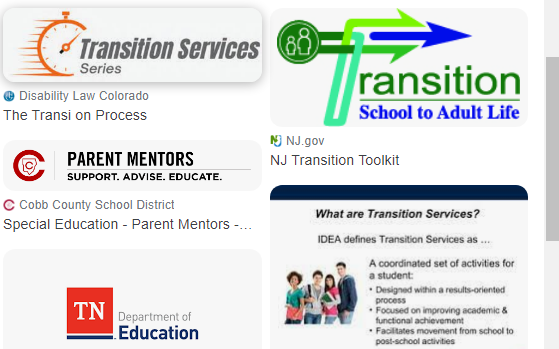Special Needs Disorder-Sensory Disabilities
Sensory Disabilities
- visual impairment/loss
- hearing impairment/loss
- deaf-blindness
Introduction
In this lecture you are going to learn two basic disabilities to learners which are within sensory disabilities. These are visual impaired/loss learners and hearing impaired/loss learners as well as deaf/blind learners. You will learn how to identify learners with these disabilities and how to assist them in classroom situations. You will also learn the effect of disabilities to learners academically.
Objectives
By the end of this lecture you should be able to:
• Differentiate sensory disabilities from other types of disabilities
• Be able to identify learners with sensory disability in the learning environment.
• Provide for learners with sensory disabilities in a classroom situation.
• Describe characteristics of learners with sensory disabilities.
• Explain the learning effects of sensory disabilities.
Sensory impairment or disability is when a person has difficulty in seeing, hearing or even both. It can mean they cannot see things around them or that they cannot hear what people say or noises around them. People with sight loss are sometimes known as blind or partially sighted but the more modern term is sight impaired or severely sight impaired. People with hearing difficulties are often known as being deaf or hard of hearing but the more modern term is hearing impairment. Some people might have both sight and hearing impairment; this used to be known as deafblind, but is now described as multi sensory impairment (or MSI).
Sensory Integration Dysfunction (SID) (also called sensory processing disorder) is a neurological disorder that causes difficulties with processing information from the five senses (vision, hearing, touch, smell and taste), the sense of movement (vestibular system), and/or sense of position (proprioception). Unlike blindness or deafness, sensory information is sensed normally by a person with Sensory Integration Dysfunction, but the brain perceives and analyses the information in an unusual way that may cause distress or confusion. There is no known cure; however, there are many treatments available.
Sensory Modulation/ sensory registration problems are characterized by failure to notice stimuli that ordinarily are registered by most people. Sensory integration disorders vary in their characteristics and intensity for each person. It ranges from those mild to others are so impaired they have trouble with daily functioning.
The person may be born with heightened hypersensitivity to sensory stimuli (e.g. feeling pain from clothing rubbing against skin, inability to tolerate normal lighting, dislike of being touched, discomfort with direct eye contact) or lower sensitivity and higher tolerance for sensory stimuli hyposensitive (e.g. Insensitivity to pain, may giggle when given an injection, not register they have touched something very hot, might appear restless and seek sensory stimulation to varying degrees). A person may have trouble in one sensory modality, a few, or all of them.
Sensory Integration Dysfunction is a disorder on its own, but can also be a characteristic of other neurological conditions; including Autism Spectrum Disorders, dyslexia, developmental dyspraxia, Tourette syndrome, multiple sclerosis, and speech delays, among others. Sensory integration dysfunction is not considered to be on the autism spectrum.
Visual Impairment/loss Visual impairment (or vision impairment) is a vision loss (of a person) to such a degree as to qualify as an additional support need through a significant limitation of visual capability resulting from either disease, trauma, or congenital or degenerative conditions that cannot be corrected by conventional means, such as refractive correction, medication, or surgery. Students with visual impairment/loss acquire information through tactile and auditory means.
Depending on the severity of the condition, the following terms may be used in the special education or regular education school environment. To qualify as a visually impaired student, certain criteria must be met, like low visual acuity, visual field limitation, progressive eye disease, or cortical visual impairment. Early identification of students with visual impairment is extremely important because early intervention will be most effective. The following are common traits to all levels of visual impairment:
• Uncomfortable and anxious in unfamiliar settings.
• Feeling of isolation due to inaccessibility of location or information.
• Increased level of stress.
• May use cane, specialieed glasses, seeing-eye dog, etc. to help in their everyday living.
Visual impairment/loss can cause several effects to students. However, there are techniques that you as a teacher in a class with visual impaired children can apply to make them learn effectively. You should first know the extent of the vision loss to best accommodate student needs.
Teaching Learners with Visual Impairment/Loss
There are techniques that you as a teacher in a class with visual impaired children can apply to make them learn effectively.
• Select course materials and order textbooks early so a student has time to procure them in large print, in electronic text, or on tape.
• Students with visual impairment/loss can experience cognitive limitation that may exist in the range and variety of experiences. Use examples, scenarios, and create assignments that are varied and are not based solely on visual perception and experience.
• Contributing to group work and reading social cues may cause problems to these students. You have to offer assistance where appropriate and alternate assignments if necessary so as to make these students comfortable with lessons.
• Oral learning is the best and sometimes only method of learning. Dealing with vision impaired/loss children, you should keep this in mind (oral learning) when designing class activities and lessons and adjust accordingly. Use detailed oral instruction.
• Layout and content of the room can cause added stress and confusion to vision impaired students. Meet with the student to identify his/her preferred seating arrangement and inform the student prior to any changes in classroom structure.
• Ensure that the student has an adequate notetaker, or provide copies of overheads and lecture notes.
• Describe all visual material and any notes written on a board or overhead.
Hearing Impairment/loss
Hearing loss or hearing impairment happens when there is a problem with one or more parts of the ear or ears. People also may use the words deaf, deafness, or hard of hearing when they are talking about hearing loss. Basically, there are two types of hearing problems: Conductive hearing impairment is one that is caused by a physical abnormality of the outer ear canal, middle ear, or trapped fluid. Sensorineural hearing impairment is an abnormality in the inner ear or in the nerves that carry signals from the ear to the brain. hearing loss has several effects to students. You must first know the extent of the hearing loss to best accommodate student needs.
Signs of partial deafness can be easier to spot at home where the typical background noise of a classroom environment does not interfere with normal hearing . Nevertheless, when any of the following signs are repeatedly noticed, it should alert teachers that there may be an undiagnosed hearing problem: ear problems and hearing defects.
Teaching Learners with Visual Impairment/Loss
- Provide students with hearing impairment/loss the written supplements to oral instructions, assignments, and directions.
- Use visual aids when possible.
- Write down key words and phrases on board.
- Repeat questions asked by other students in the class.
- Avoid pacing and face the student.
- Speak clearly without exaggerating lip movements or volume.
- Use an amplification system if necessary.
- In a group situation, be sure the student with hearing impairment/loss is included. Feeling ignored and invisible is a painful legacy that such people have due to their interactions with the “hearing world.”
- Written and oral communication is difficult. Use touch or a hand signal to initiate communication or get the student’s attention. Break up long sentences and simplify where possible.
- Incorporating visual aids makes use of visual modes of communicating. Use overheads and boards liberally. Offer copies, outlines, lecture notes on main points, written review material and charts.
Deaf-blindness
Although the term deafblind implies a complete absence of hearing and sight, in reality, it refers to children with varying degrees of vision and hearing losses. The key feature of deafblindness is that the combination of losses limits access to auditory and visual information. Children with deafblindness require teaching methods that are different from those for children who have only hearing or vision loss.
Children with deaf-blindness have unique educational needs. Although they are deaf, the adaptations needed for their learning style will differ from the child who only has deafness. Although they are blind the adaptations needed for their learning style will differ from the child who only has blindness. It is important to note these are not actual children and that instruction for any child with a disability must accommodate his/her individual needs.
Safety is of critical importance to this child. Not only must the environment be made safe for him, but he must feel safe in order to move around on his own. If he does not, he is likely to stay glued to one spot resisting interaction with his environment and the people in it. Instruction and support from an orientation and mobility is very important. Having a student who is deaf-blind in the classroom may require some adaptations in the teacher’s teaching style.
Teaching Students who are Deaf-Blind
- Use of Student Aids/Accommodations
There are several types of support services available to such students. Access to these services will help increase the student’s understands in class and maintain the general pace of the course.
- Physical Classroom Accommodations
There are several possible accommodations that may need to be addressed based upon the location and setting of the course. The student and teacher will need to evaluate seating with regard to classroom participation and at times it may be beneficial/necessary to look at alternative settings if the physical classroom cannot accommodate a student’s needs.
- Use of Handouts
For students in your class who will need alternate media, it is critical to meet with the student early to allow time to convert materials into the student’s preferred mode. Ensuring a student receives course materials in a timely manner, defined as the same time other students receive the information, is essential to the student’s success.
- Use of Audiovisual Materials
The use of videotapes in the class, class lecture using an overhead projector, and slides will all require some type of modification for students who have vision and hearing loss. Some adaptations may include use of an interpreter to be sure a student receives the information being presented. Also large print or Braille copies of overhead materials or a transcript of videotapes/slides may be needed for the student. The use of colour overlays might improve contrast for students with low vision. Lighting is often critical for students with low vision.
- Small Group Discussions/Activities
Accommodations used in the classroom at large may also be needed when students have small group discussions or complete group projects. Some of these support services may include use of an interpreter. Communication rules may need to be established and followed to insure only one student speaks at a time and that students identify themselves before speaking so the student who is deaf-blind can follow and participate in the discussion.
- Oral Presentations
If the course requires oral presentations by students, some accommodations may be added to insure clear communication by all. If the student uses an interpreter in class, the interpreter may need to voice to the class what the student signs.
- Teaching Style
Having a student who is deaf-blind in the classroom may require some adaptations in the teacher’s teaching style. If the teacher typically paces or walks around the classroom during the session, the student may not be able to follow the voice clearly. If the teacher speaks while writing on the board, the student may not be able to hear or speech-read the person clearly. If the teacher uses overheads and slides on a regular basis, they may need to be copied or transcribed into Braille for the student who cannot see them. The teacher’s instructions speed should permit an interpreter to keep pace. The use of role-play and class participation should include the student with vision and hearing loss. Teachers who produce last-minute handouts will need to have them available in the alternate format choice of the student. Given the student’s preferred learning style, the teacher can make the necessary accommodations with as little change to teaching style as possible.
Diagnosis of Intellectual Disabilities
Intellectual disability is a term used when a person has certain limitations in mental functioning and in skills such as communicating, taking care of him or herself, and social skills. These limitations will cause a child to learn and develop more slowly than a typical child. Levels of intellectual disability vary greatly in children; from a very slight problem to a very severe problem.
There are many signs of an intellectual disability. For example, children with an intellectual disability may:
• Learn to talk later, or have trouble speaking.
• Find it hard to remember things.
• Not understand how to pay for things.
• Have trouble understanding social rules.
• Have trouble seeing the consequences of their actions.
• have trouble solving problems, and/or
• Have trouble thinking logically.
• Have trouble in understanding complex information.
• Hard to follow directions and instructions, particularly those which involve multiple steps or complex information.
• Have trouble in using judgment and abstract thought.
Intellectual disabilities are diagnosed by looking at the ability of a person’s brain to learn, think, solve problems, and make sense of the world (called IQ or intellectual quotient); and whether the person has the skills he or she needs to live independently (called adaptive behaviour, or adaptive functioning).
Teaching Students with Intellectual Disabilities
Consider these tips for working with students with an intellectual disability:
• Use concrete items and examples to explain new concepts and provide practice in existing skill areas.
• Role models desired behaviours, and clearly identify what behaviours you expect in the classroom.
• Plan ahead with your class activities.
• Use appropriate communication methods for pre verbal students or those with beginning language.
• Do not overwhelm a student with multiple or complex instructions.
• Use strategies such as chunking, backward shaping and role modeling as helpful teaching approaches.
• Be explicit about what it is you want a student to do.
• Learn about the needs and characteristics of your student, but do not automatically assume they will behave the same way today as they did yesterday.
• Ask for their input about how they feel they learn best, and help them to be as in control of their learning as possible.
• Put skills in context so there is a reason for learning tasks.
• Involve families and significant others in learning activities, planning and special days, as well as in informing you about the needs of their young person.
Emotional Disabilities
The word emotion includes a wide range of observable behaviors, expressed feelings, and changes in the body state. This diversity in intended meanings of the word emotion makes it hard to study. For many of us emotions are very personal states, difficult to define or to identify except in the most obvious instances. Moreover, many aspects of emotion seem unconscious to us.
Emotional disabilities are characterized by one or more of the following:
• An inability to learn that cannot be explained by intellectual, sensory, or health factors.
• An inability to create or sustain reciprocal relationships with peers and teachers.
• Inappropriate types of behavior or feelings in typical situations or environments.
• A pervasive mood of unhappiness or depression.
• Frequent occurrences of physical symptoms or fears attached to personal or school problems.
Behavioral Disabilities
Behavioural disabilities are those that cannot be attributed to psychiatric disorders such as major depression, schizophrenia, or developmental disorders such as Autism Spectrum Disorders. Behavioural disabilities are identified in children whose behaviuor prevents them from functioning successfully in educational settings, putting either themselves or their peers in danger, and preventing them from participating fully in the general education programme.
Behavioural disorders become apparent when the student displays a repetitive and impact persistent pattern of behaviuor that results in the significant disruption in other students. Such disturbances may cause significant impairments in academic, social, and or occupational functioning. Such a behaviuor pattern is consistent throughout the individuals’ life.
The Behavioural Disabilities fall into two categories:
Conduct Disorders: it is the more severe. According to the Diagnostic and Statistical Manual IV TR (APA, 2000), the essential feature of conduct disorder is a repetitive and persistent pattern of behaviour in which the basic rights of others or major age-appropriate societal norms or rules are violated.
Oppositional Defiant Disorder: this is less serious, and less aggressive than a conduct disorder. Children with oppositional defiance disorder still tend to be negative, argumentative and defiant.
Both Conduct Disorders and Oppositional Defiant Disorder are diagnosed in children under 18. Children who are older than 18 are typically evaluated for antisocial disorder or other personality disorders.
Teaching Students with Behavioral and Emotional Disorders
- Expose students with such disorders to other students who demonstrate the appropriate behaviours.
- Have pre-established consequences for misbehaviour. Administer consequences immediately, then monitor proper behaviour frequently.
- In group activities, acknowledge the contributions of the student with a behavioural/emotional disorder. Treat these students as individuals who deserve of respect and consideration.
- Reward more than you punish, in order to build self-esteem, and praise immediately at all good behaviour and performance.
- Also encourage others to be friendly with students who have behavioural/emotional disorders.
- Do not expect students with behavioural disorders to have immediate success; work for improvement on an overall basis.
- Present a sense of high degree of possessiveness in the classroom environment.
- Use a wide variety of instructional equipment which can be displayed for the students to look at and handle.
- Be sensitive when making team pairings for activities so that the student with an emotional disorder is supported, as in laboratory.
- To ensure success consider the special needs and interests of each person; give friendly, patient instruction in the laboratory skills; and continually encourage a wider interest in activities.
- In group interaction, some students may experience considerable strain in social adjustment in a group context. It may be necessary to work gradually toward group activities.
- Help the student to feel as though he or she has something worthwhile to contribute to the discussion.
- Instructional strategies involving self-control, self-reinforcement, self-monitoring, self-management, problem solving, cognitive behavior modification, and metacognitive skills should be focused on teaching students reading skills.
- As a teacher, you serve a model for the students who are behaviorally disturbed. Your actions therefore, must be consistent, mature, and controlled. Attention Deficit Disorders
Attention Deficit Disorder (ADD) is a chronic disorder characterised by serious and persistent difficulties in attention span, impulse control, and hyperactivity. It can have a significantly negative effect on an individual’s life at home, in school, or in the community.
To be diagnosed as having ADD a student must display, for six months or more, at least eight of the characteristics, according to the “Diagnostic and Statistical Manual of Mental Disorders” (3rd ed., rev.) (American Psychiatric Association, 1987).Teaching Students with ADD
• Use of Self-monitoring techniques can be very effective in the school setting. Self-monitoring of attention involves cueing the student so that he/she can determine how well he/she is attending to the task at hand.
• Applying Behaviour management techniques is also effective often in the learning environment. This can help students with ADD to develop behaviours that lead to academic and social successes.
• Provide supervision and discipline
• Providing Encouragement -
Learning Disabilities
Learning disabilities are problems that affect the brain’s ability to receive, process, analyse, or store information. These problems can make it difficult for a student to learn as quickly as someone who is not affected by learning disabilities. Some of the disabilities commonly found are dyslexia (inability to read), dyscalcula (inability in math reasoning), dysgraphia (difficulty with syntax), visual, and audio difficulties. Generally, a person with learning disabilities experience difficulties in study skills, writing skills, oral skills, reading skills, math skills, and social skills.
Learning disabilities do not include, “…learning problems that are primarily the result of visual, hearing, or motor disabilities, of mental retardation, of emotional disturbance, or of environmental, cultural, or economic disadvantage.”There is no “cure” for learning disabilities. They are life-long.
There is no one sign that shows a person has a learning disability. Experts look for a noticeable difference between how well a child does in school and how well he or she could do, given his or her intelligence or ability. There are also certain clues that may mean a child has a learning disability. Most relate to elementary school tasks, because learning disabilities tend to be identified in elementary school. A child probably will not show all of the signs, or even most of them. However, if a child shows a number of these problems, then parents and the teacher should consider the possibility that the child has a learning disability.
Teaching Students with ADD
Provide instruction and accommodations to address the student’s special needs. These may include:
• breaking tasks into smaller steps, and giving directions verbally and in writing;
• giving the student more time to finish schoolwork or take tests;
• letting the student with reading problems use textbooks-on-tape ;
• letting the student with listening difficulties borrow notes from a classmate or use a tape recorder;
• Letting the student with writing difficulties use a computer with specialised software that spell checks, grammar checks, or recognises speech.
• Teach organizational skills, study skills, and learning strategies. These help all students but are particularly helpful to those with learning disabilities.
• Establish a positive working relationship with the student’s parents. Through regular communication, exchange information about the student’s progress at school.
• Never assess a student’s capabilities based solely on their IQ or other standardised test scores.Communication Disorders
The term “communication disorders” encompasses a wide variety of problems in language, speech, and hearing. Speech and language impairments include articulation problems, voice disorders, fluency problems (such as stuttering), aphasia (difficulty in using words, usually as a result of a brain injury), and delays in speech and/or language.Teaching Students with ADD
• Encourage classmates to accept the student with communicative problems.
• Be a good speech model. This will indicate to all that good communication is desirable.
• An atmosphere conductive to easy and good interactive communication should be established and maintained in the classroom.
• Give students with speech impairments opportunity to speak in class.
• Give them time to express themselves, do not interrupt or try to fill in gaps for them.
• Speak to them naturally.
• Encourage and assist in facilitation of participation in activities and discussions.
• Be a good listener.
• Students with speech impairments should be free to participate in class as other students do, but pressure to perform orally should be avoided.
• Discuss the student’s preference if oral presentations are part of the class. Some students prefer to make the presentation in a private setting or to have another person voice their presentation.
• Some students feel that informing classmates about the speech impairment will make participating in class more comfortable. Discuss if and how the student wishes this done.Chronic Health Impairment
Some chronic health impairments are visible disabilities, but many are invisible illnesses or medical conditions. These can have a major impact on a student’s energy level and can have implications for memory, mobility, speech, vision, or muscle control. When the disability impacts additional areas, students often require assistance or accommodations. For instance, some people with multiple sclerosis experience mobility limitations or vision impairments and need accommodations geared to those limitations.
Teaching Students with ADD
• Make allowances for the student’s attendance unless attendance is deemed essential to the course objectives.
• If the student’s performance is adequate to date, it may be that missing some classes is preferable to withdrawing.
• Provide materials and assignments if the student is able to work at home or in the hospital.
• Provide flexible time lines for turning in assignments.Psychological Disabilities
The most commonly observed psychological diagnoses are disorders of mood (bipolar disorder and major depression), anxiety and panic disorders, obsessive-compulsive disorder, and schizophrenia. These types of disabilities are now recognized to have a strong biological basis and are not a matter of will power or choice. Many people can be effectively treated with appropriate psychotherapy and modern psychiatric medication, which reduces the acute symptoms and enables them to return to regular daily activities. The disability may be hidden and have little or no impact on learning.
Misconceptions and stigma about mental illness often complicate providing educational support for students with a history of psychological disabilities. The degree of ease a student has in disclosing this type of disability depends on the individual student and how comfortable and welcoming the environment is.
Psychological disabilities may pose many challenges to effective learning. A common difficulty faced by students with a psychological disability is low motivation, or even apathy. Students may also have trouble concentrating as a result of the disability or as a side effect of medication.Teaching Students with ADD
• Be flexible with attendance or assignment due dates in the event of a recurrence of symptoms.
• Assist the student in filing for an incomplete or a late withdrawal, rather than giving a failing grade in the event of a relapse.
• Understand the facts about the disability. Do not pre-judge or assume that a student is unmotivated or lazy.
• Ask what support the student may need.
• If the student has periods of poor concentration, suggest audio-taping lectures to supplement note-taking.
• Exam time is stressful for everyone and for a student with a psychological disability, stress can be especially difficult to handle. Speak with the student prior to deadlines about appropriate mechanisms that will not disadvantage either the student with the disability or other students in the class.Autistic Spectrum Disorders
Autism is a complex developmental disability that causes problems with social interaction and communication. Health care providers think of autism as a “spectrum” disorder, a group of disorders with similar features. One person may have mild symptoms, while another may have serious symptoms. But they both have an autism spectrum disorder.

















Leave a Reply